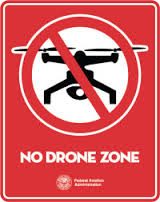
The effort is part of a push to determine the best way to ensure that drones do not interfere with passenger aircraft. In the final version of this year’s FAA Reauthorization Package, lawmakers mandated a research project to explore anti-drone technology.
“The FAA is coordinating with our government and industry partners to evaluate technologies that can be used safely to detect drones near airports,” says an FAA statement.
The project is part of the FAA’s “Pathfinder Program for UAS Detection at Airports and Critical Infrastructure,” and is one of 6 tests scheduled over 18 months. Nevada and North Dakota participated in flight operations for the Denver tests: industry participants included CACI International, Liteye Systems and Sensofusion.
“The FAA plans to capture the data and findings from the evaluations and draft recommendations for standards,” the agency says. “These standards will guide the selection of drone-detection systems for airports nationwide.” Tests will continue at Atlantic City International Airport, JFK International Airport, Eglin Air Force Base, Helsinki Airport, and Dallas-Ft. Worth International Airport.
The issue of drones near airports is one of contention in the industry, with researchers differing on the scale of the problem and the true dangers that drones present. While one research paper using computer algorithms to estimate the potential impact of a drone hitting an aircraft said the risk was “catastrophic,” other research indicated that the risk was negligible. The British government has now begun testing with actual aircraft in order to provide real data on the issue.
The FAA’s reporting system for “near misses” has been widely criticized for a lack of consistent reporting standards, leaving the real number of drones seen near to aircraft in question.

Miriam McNabb is the Editor-in-Chief of DRONELIFE and CEO of JobForDrones, a professional drone services marketplace, and a fascinated observer of the emerging drone industry and the regulatory environment for drones. Miriam has penned over 3,000 articles focused on the commercial drone space and is an international speaker and recognized figure in the industry. Miriam has a degree from the University of Chicago and over 20 years of experience in high tech sales and marketing for new technologies.
For drone industry consulting or writing, Email Miriam.
TWITTER:@spaldingbarker
Subscribe to DroneLife here.